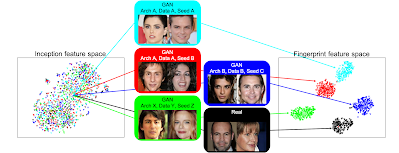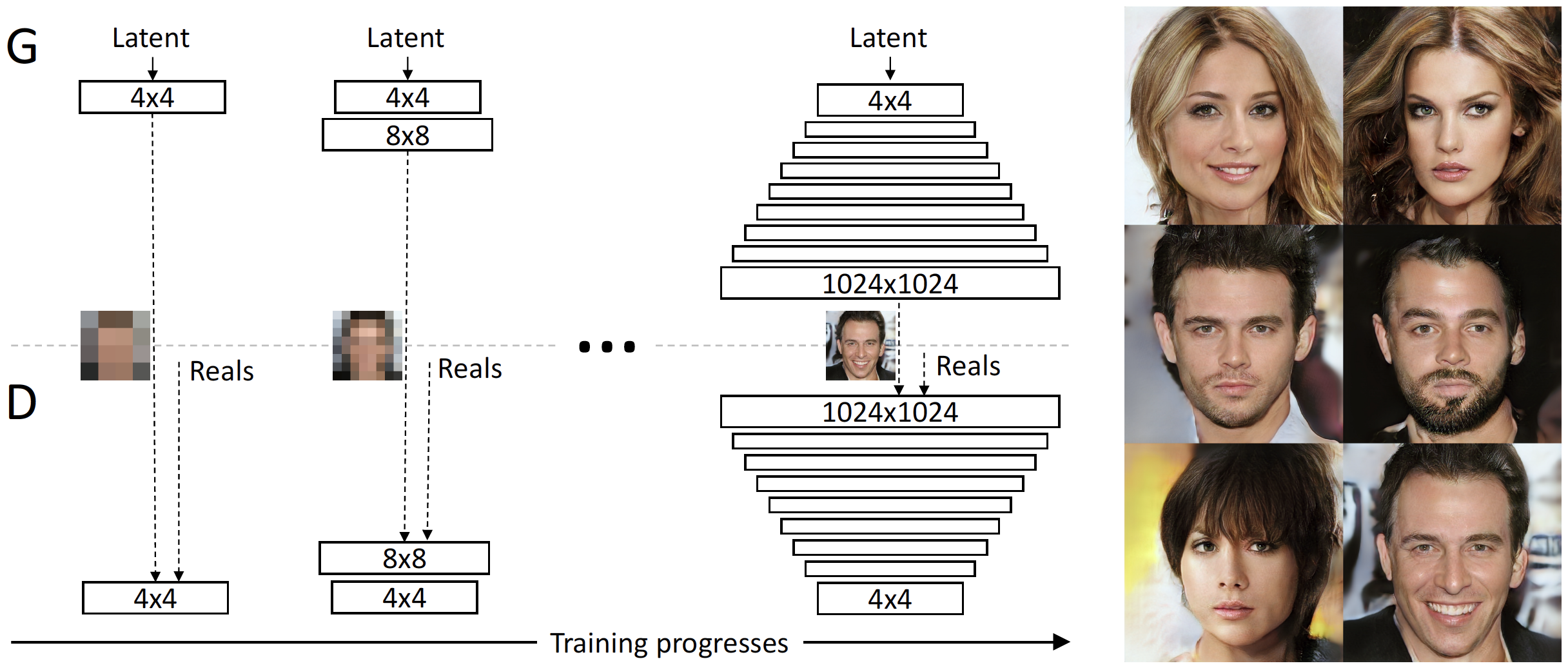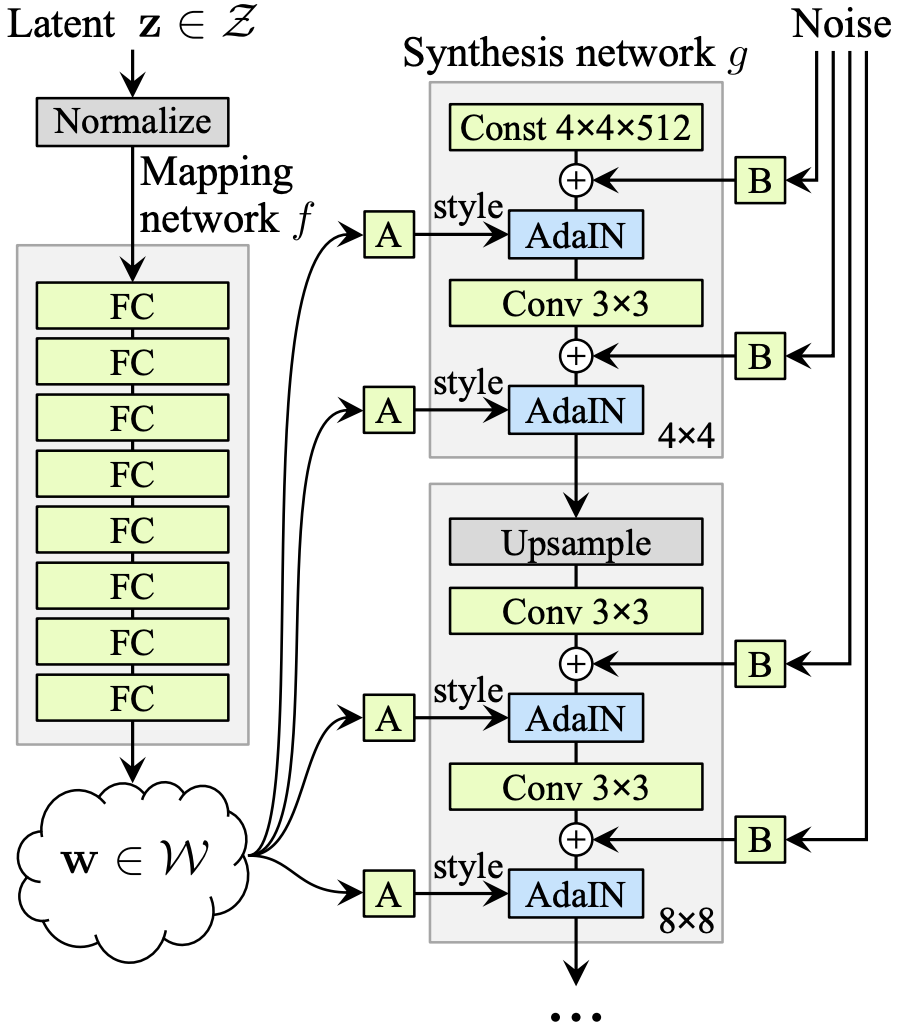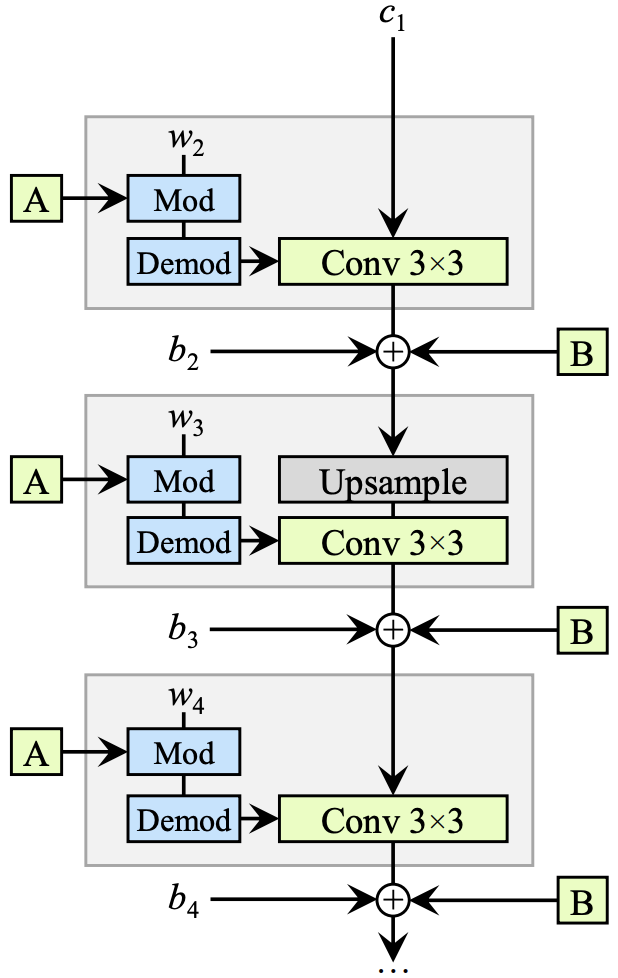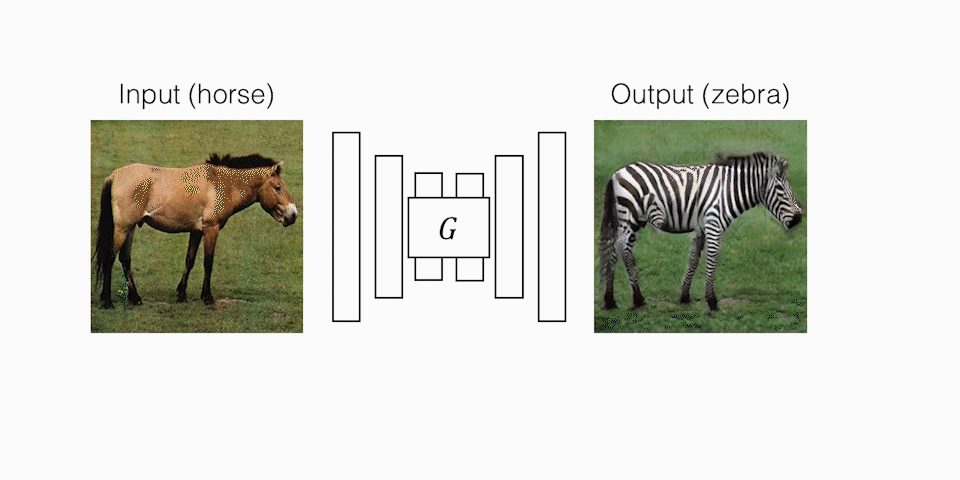Artificial Fingerprinting for Generative Models:
Rooting Deepfake Attribution in Training Data
ICCV 2021 Oral
1. University of Maryland
2. Max Planck Institute for Informatics
3. CISPA Helmholtz Center for Information Security
*Equal contribution
*Equal contribution

Abstract
Photorealistic image generation has reached a new level of quality due to the breakthroughs of generative adversarial networks (GANs). Yet, the dark side of such deepfakes, the malicious use of generated media, raises concerns about visual misinformation. While existing research work on deepfake detection demonstrates high accuracy, it is subject to advances in generation techniques and adversarial iterations on detection countermeasure techniques. Thus, we seek a proactive and sustainable solution on deepfake detection, that is agnostic to the evolution of generative models, by introducing artificial fingerprints into the models.
Our approach is simple and effective. We first embed artificial fingerprints into training data, then validate a surprising discovery on the transferability of such fingerprints from training data to generative models, which in turn appears in the generated deepfakes. Experiments show that our fingerprinting solution (1) holds for a variety of cutting-edge generative models, (2) leads to a negligible side effect on generation quality, (3) stays robust against image-level and model-level perturbations, (4) stays hard to be detected by adversaries, and (5) converts deepfake detection and attribution into trivial tasks and outperforms the recent state-of-the-art baselines. Our solution closes the responsibility loop between publishing pre-trained generative model inventions and their possible misuses, which makes it independent of the current arms race.
Results
Samples on CelebA 128×128
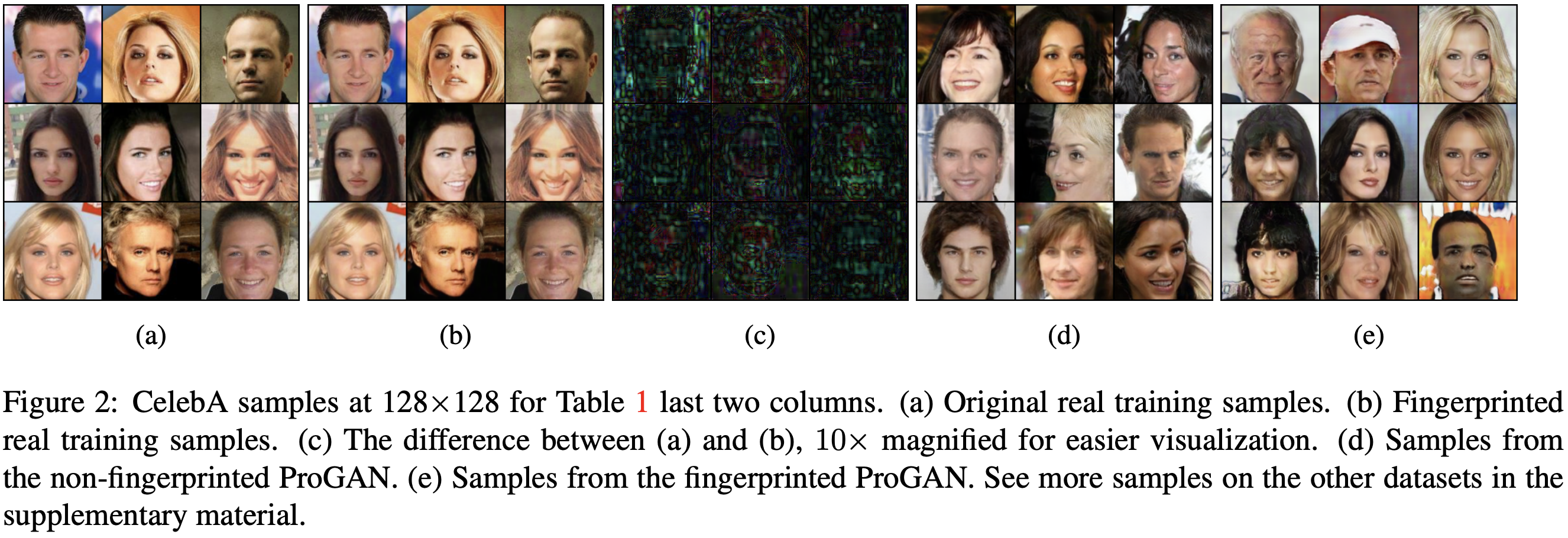
Samples on LSUN Bedrooms 128×128
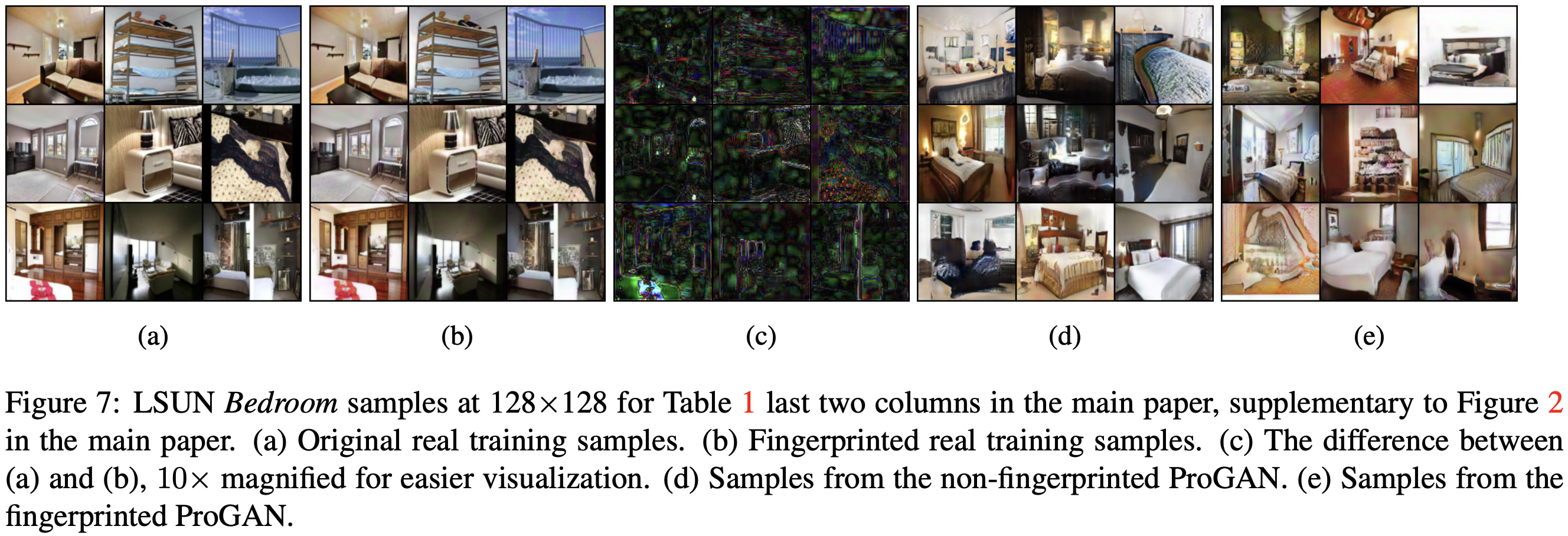
Samples on LSUN Cats 256×256
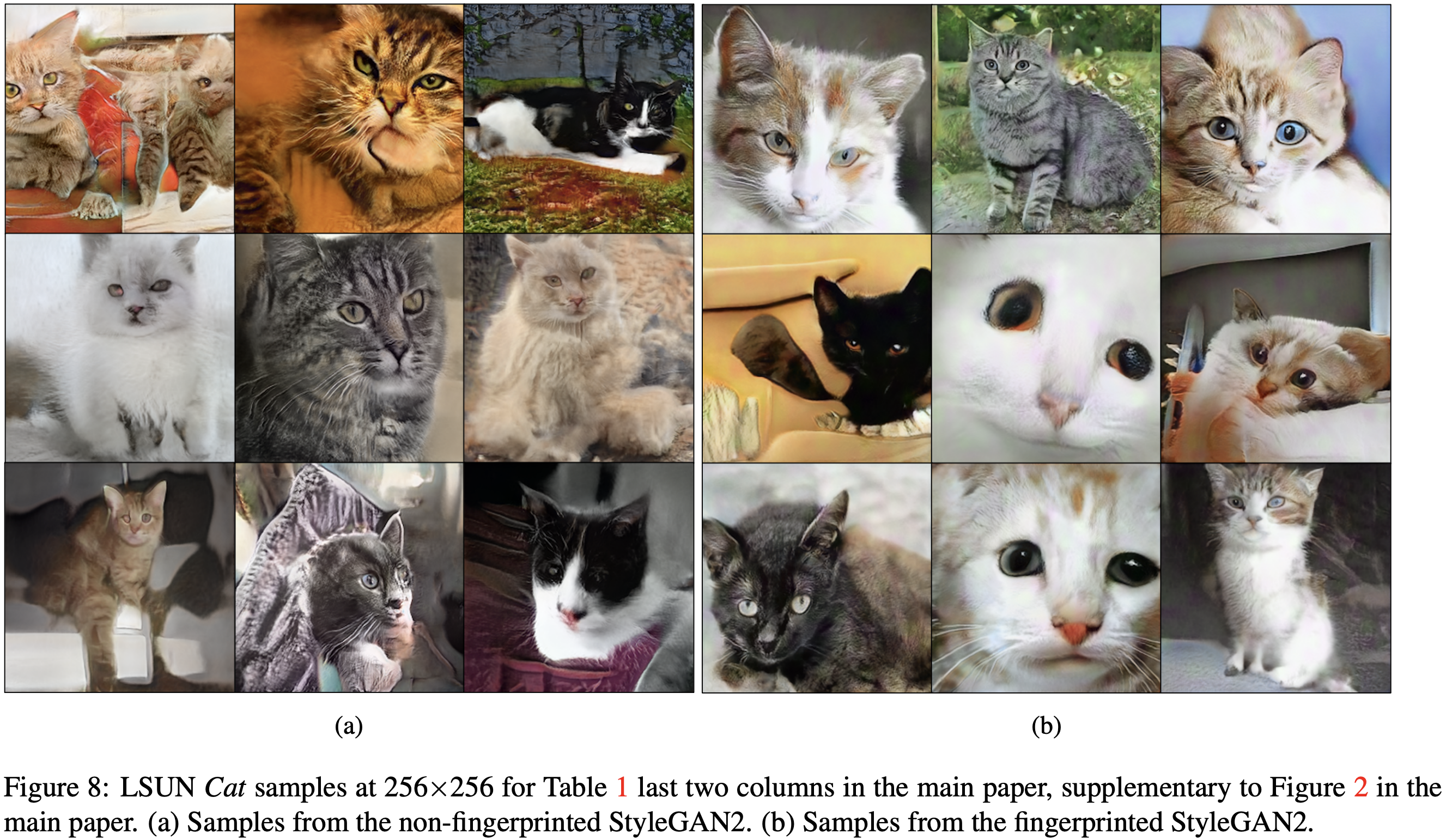
Samples on CIFAR-10 32×32
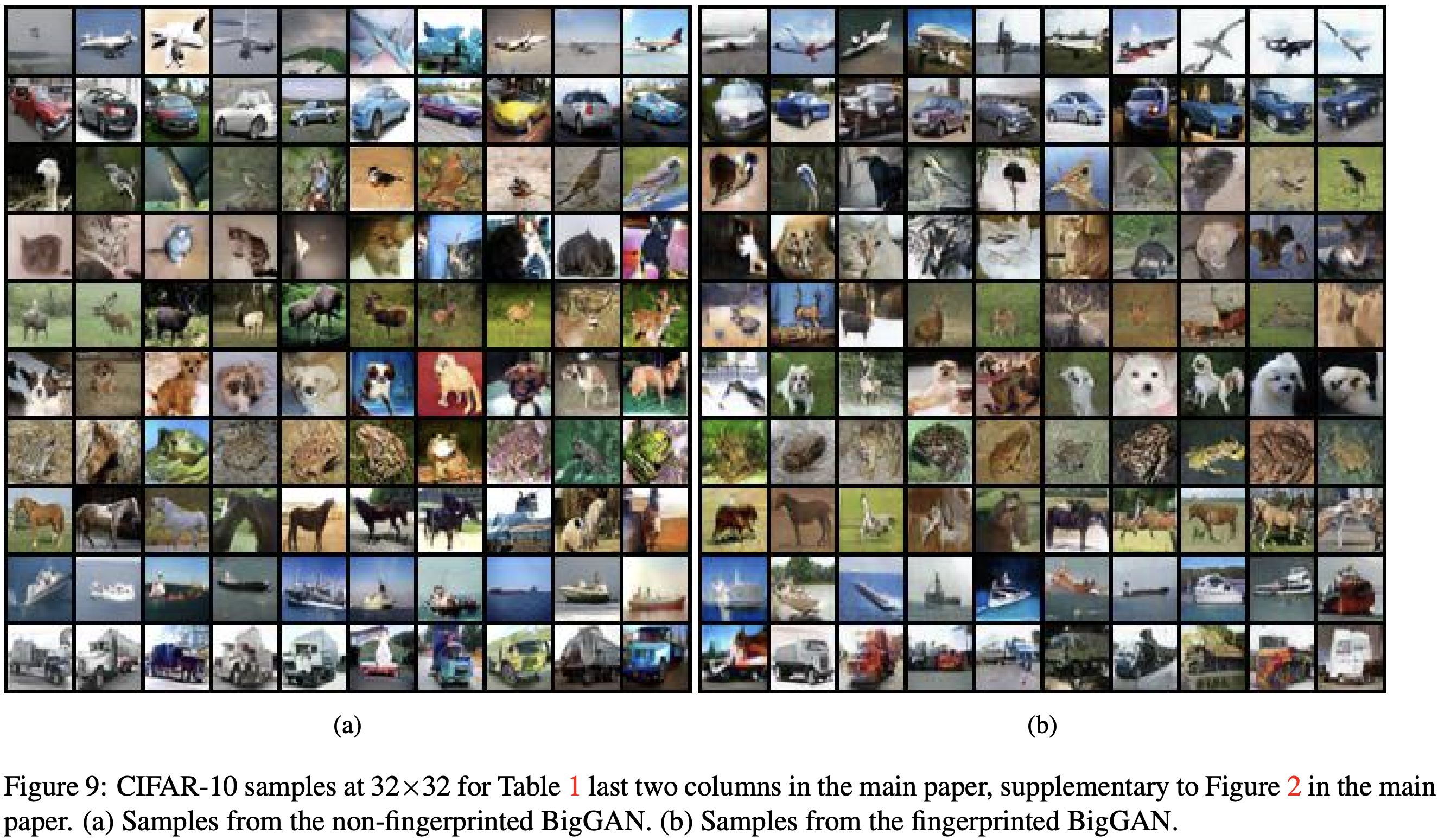
Samples on Horse2Zebra 256×256
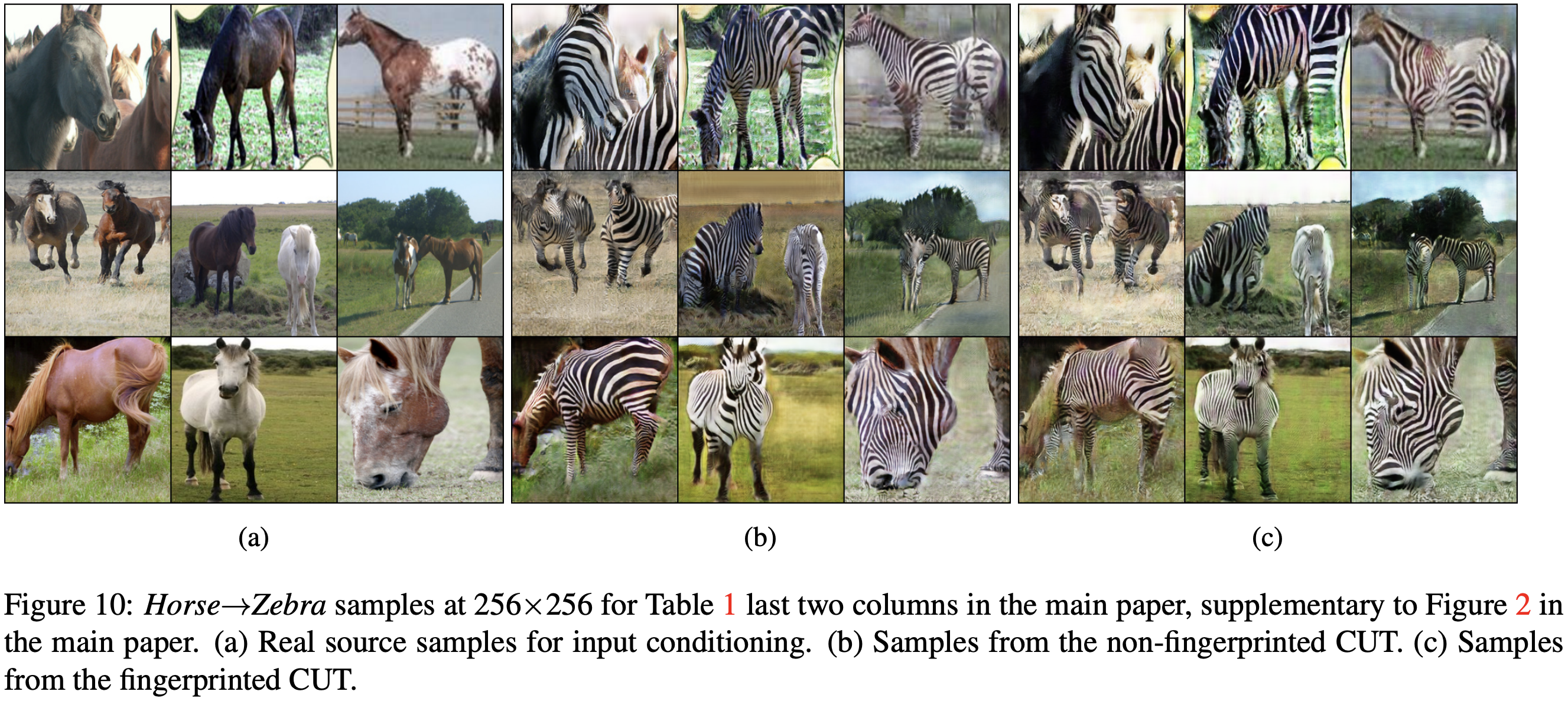
Samples on Cat2Dog 256×256
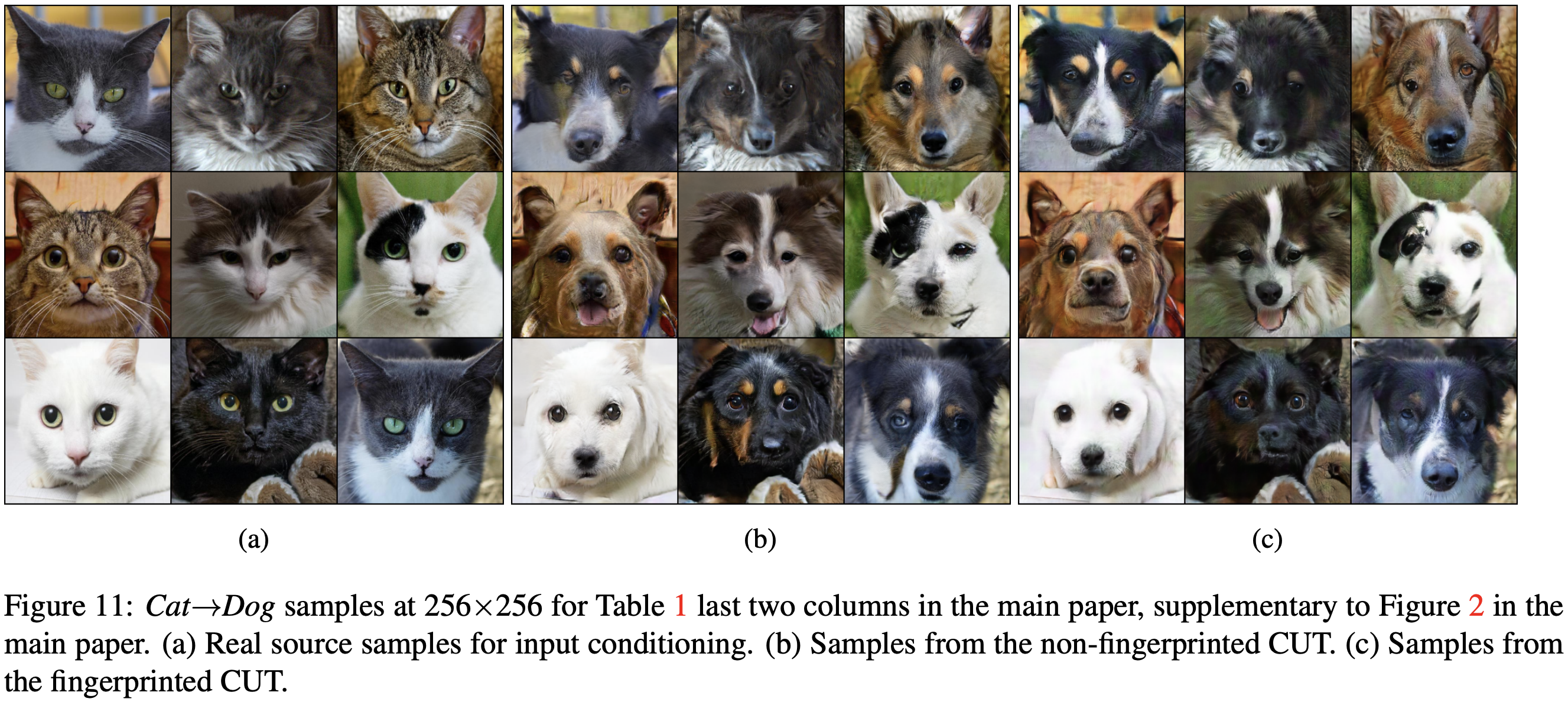
Fingerprint detection accuracy and image fidelity
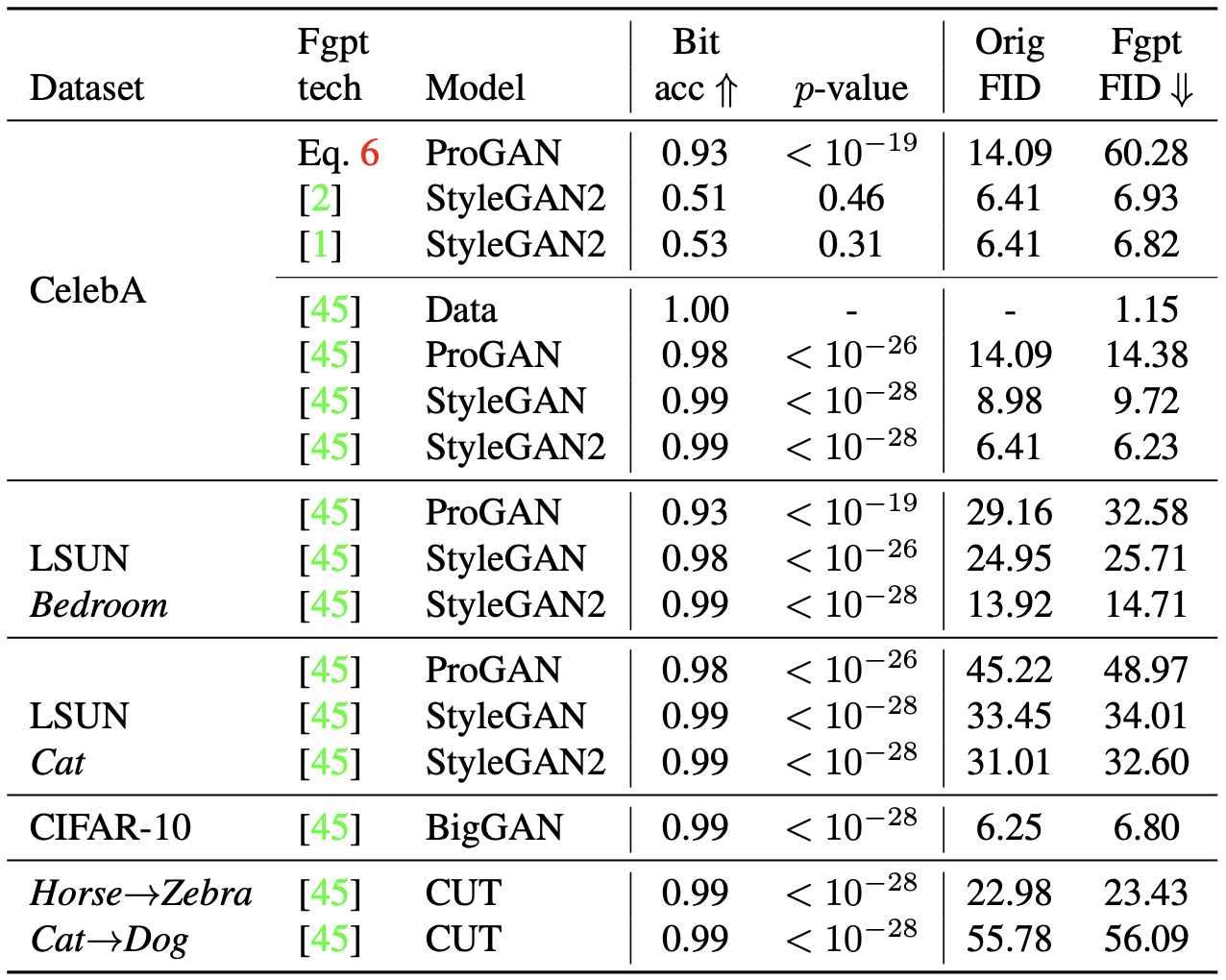
Robustness against image perturbations on CelebA 128×128

Deepfake detection and attribution accuracy
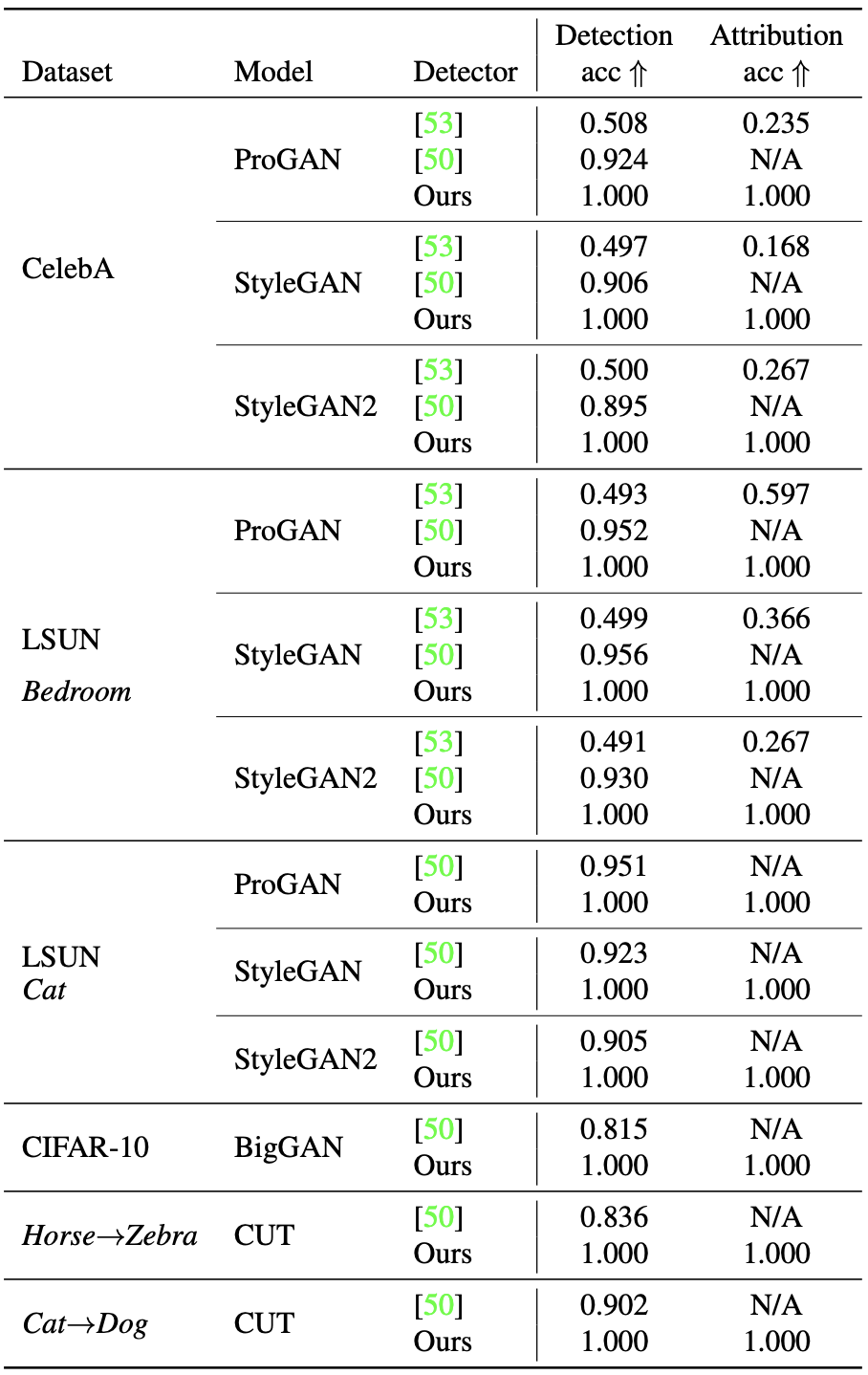
Video
Press coverage

thejiangmen Academia News
Citation
@inproceedings{yu2021artificial,
author={Yu, Ning and Skripniuk, Vladislav and Abdelnabi, Sahar and Fritz, Mario},
title={Artificial Fingerprinting for Generative Models: Rooting Deepfake Attribution in Training Data},
booktitle = {IEEE International Conference on Computer Vision (ICCV)},
year={2021}
}
Acknowledgement
We thank David Jacobs, Matthias Zwicker, Abhinav Shrivastava, Yaser Yacoob, and Apratim Bhattacharyya for constructive discussion and advice. Ning Yu was partially supported by Twitch Research Fellowship. Vladislav Skripniuk was partially supported by IMPRS scholarship from Max Planck Institute. This work was also supported, in part, by the DARPA SemaFor (HR001119S0085) program. Any opinions, findings, conclusions, or recommendations expressed in this material are those of the authors and do not necessarily reflect the views of the DARPA.


